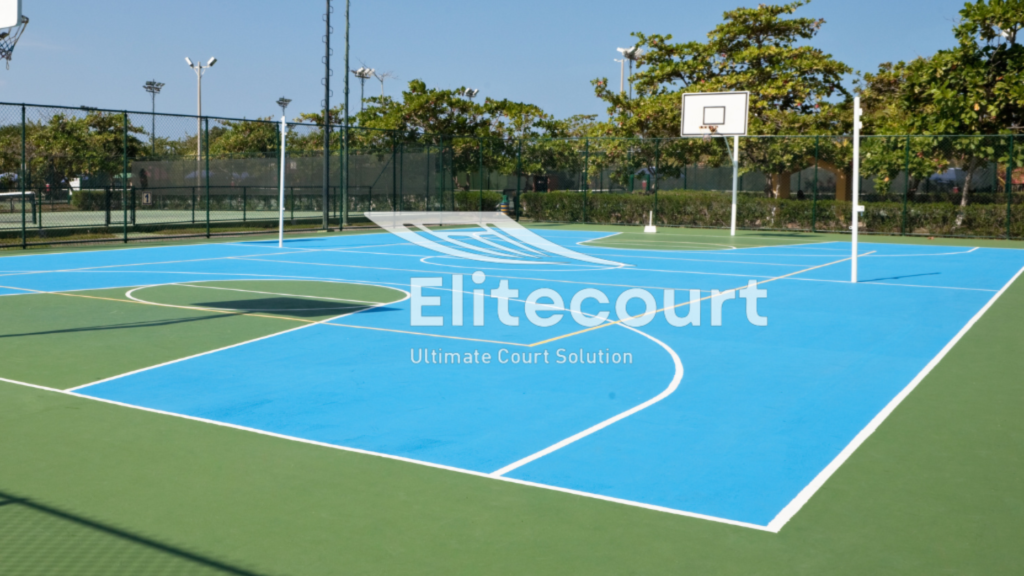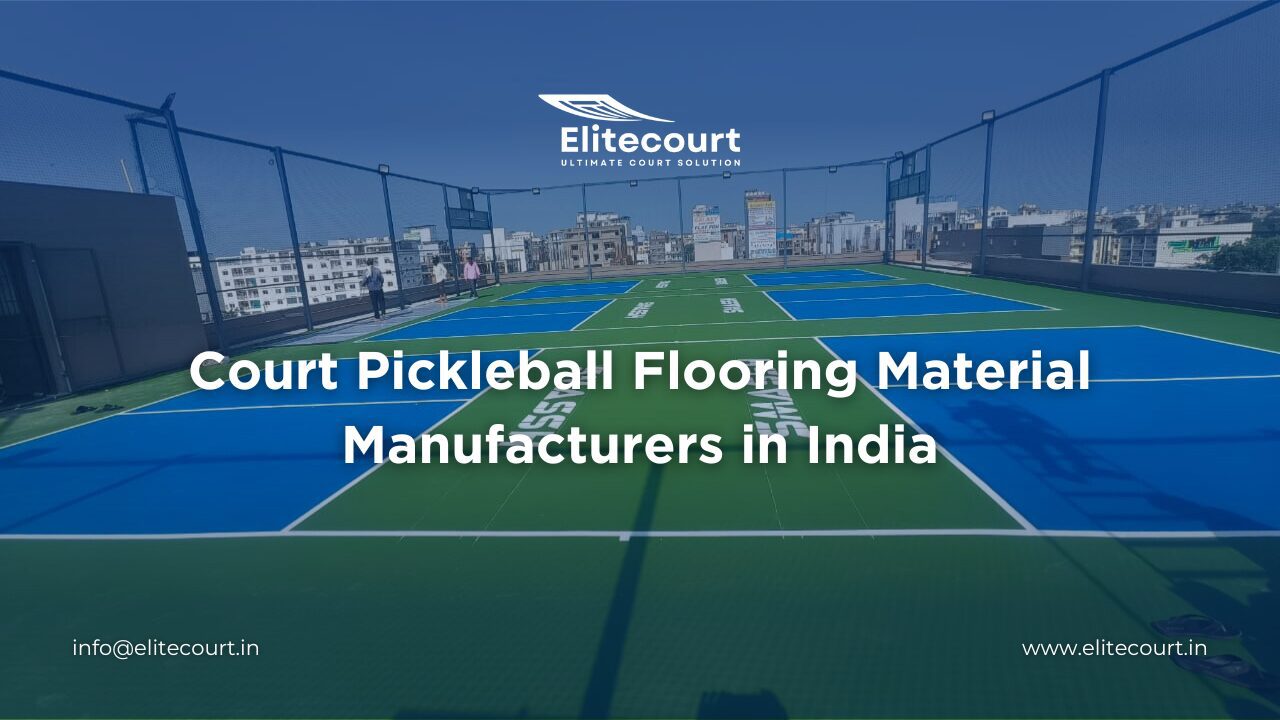Acrylic vs. Traditional Sports Flooring which is best?

Table of Contents

Acrylic vs. Traditional Sports Flooring: Why Acrylic Outshines the Rest
In the realm of sports flooring, the choice of surface can significantly impact the performance, safety, and overall experience for athletes and spectators alike. Among the various options available, acrylic and traditional sports flooring materials such as hardwood and synthetic surfaces are the most commonly considered. While both have their unique characteristics and benefits, acrylic flooring emerges as the superior choice for a multitude of reasons. Let’s delve deeper into why acrylic flooring stands out as the best option for sports facilities.
The Unmatched Durability and Resilience of Acrylic Sports Flooring
Acrylic sports flooring has garnered widespread acclaim for its exceptional durability and resilience. This type of flooring is constructed from multiple layers of high-quality acrylic materials, designed to withstand heavy usage and extreme weather conditions. Unlike traditional surfaces, which may degrade over time, acrylic flooring maintains its integrity and performance, making it a preferred choice for both indoor and outdoor sports courts.
Key Advantages:
- Exceptional Longevity: One of the most significant advantages of acrylic sports flooring is its impressive lifespan. The material’s robust composition ensures that it resists cracking, peeling, and fading, even under constant use. This durability translates to a long-term investment, as facilities can rely on the surface to maintain its quality and appearance for many years, reducing the need for frequent replacements.
- Minimal Maintenance Requirements: Maintaining acrylic flooring is a relatively straightforward process compared to traditional surfaces. While hardwood floors require regular polishing and resurfacing, and synthetic materials may need special cleaning solutions, acrylic surfaces are low-maintenance. A simple wash with water and a mild detergent is often sufficient to keep the surface clean. Additionally, periodic re-coating can restore the floor’s finish, ensuring it remains in top condition with minimal effort and cost.
- Wide Range of Customization Options: Acrylic flooring offers unparalleled customization possibilities, allowing facilities to create a unique and personalized environment. With a vast array of color options and surface textures available, acrylic surfaces can be tailored to meet specific aesthetic and functional requirements. This versatility is especially beneficial for branding purposes, as teams and organizations can incorporate their colors, logos, and designs into the court, creating a visually striking and cohesive look.
Acrylic vs. Traditional Sports Flooring: A Comprehensive Comparison
While traditional sports flooring materials, such as hardwood and synthetic surfaces, have long been popular choices, they often fall short when compared to the versatile and durable nature of acrylic flooring. Let’s explore some of the key limitations of traditional flooring options and how acrylic flooring addresses these challenges.
Limitations of Traditional Flooring:
- Higher Maintenance Demands: Traditional sports flooring materials often require more intensive maintenance to preserve their appearance and performance. For example, hardwood floors must be regularly polished and occasionally resurfaced to prevent wear and tear. Similarly, synthetic surfaces may require specific cleaning solutions and techniques to avoid damage. These maintenance routines can be time-consuming and costly, making them less practical for facilities with high traffic and usage.
- Susceptibility to Environmental Factors: Traditional sports flooring materials can be vulnerable to environmental conditions, particularly when used in outdoor settings. Hardwood, for instance, can warp, swell, or shrink when exposed to moisture, leading to uneven surfaces and potential safety hazards. Synthetic surfaces may degrade under prolonged exposure to UV radiation, causing discoloration and loss of performance characteristics. In contrast, acrylic flooring is designed to withstand a wide range of environmental conditions, making it a versatile and reliable choice for both indoor and outdoor applications.
- Limited Aesthetic and Functional Customization: While traditional flooring materials like wood offer a classic and timeless aesthetic, they lack the extensive customization options provided by acrylic. This limitation can be a drawback for sports facilities looking to create a unique and engaging environment that reflects their identity and values. Acrylic flooring, with its broad spectrum of colors and textures, offers greater flexibility in design, allowing for more creative and personalized solutions.
The Comfort and Safety Benefits of Acrylic Surfaces
Beyond its durability and customization options, acrylic sports flooring also offers significant comfort and safety benefits. The surface provides a consistent level of grip, which is crucial for preventing slips and falls during play. This consistent grip is especially important in fast-paced sports like basketball and tennis, where sudden stops and changes in direction are common. Furthermore, acrylic flooring offers a slight cushioning effect, reducing the impact on athletes’ joints and minimizing the risk of injuries over time.
Enhanced Player Experience:
- Consistent Performance Across the Surface: One of the standout features of acrylic flooring is its ability to provide a uniform playing experience. The surface’s even texture ensures predictable ball behavior, allowing athletes to perform at their best without worrying about irregularities. This consistency is particularly valuable in competitive sports, where even the slightest variations in surface quality can impact the outcome of a game.
- Optimal Temperature Management: Unlike some traditional sports flooring materials that can retain heat, acrylic surfaces are designed to reflect it. This property helps to keep the surface cooler, even during hot weather, enhancing player comfort. This feature is especially beneficial for outdoor courts, where high temperatures can affect both the playing experience and the longevity of the flooring material.
Conclusion: Acrylic Flooring as the Ultimate Sports Surface Solution
In the ongoing debate between acrylic and traditional sports flooring, acrylic clearly emerges as the superior choice. Its unparalleled durability, low maintenance requirements, extensive customization options, and enhanced comfort and safety features make it the ideal solution for a wide range of sports facilities. Whether used indoors or outdoors, acrylic flooring provides a reliable and high-performing surface that meets the demands of athletes and facility managers alike.
For those looking to invest in a sports flooring solution that offers both practicality and aesthetic appeal, acrylic flooring is the clear winner. Its versatility, resilience, and ability to create a personalized and engaging environment make it the top choice for sports facilities seeking to provide the best possible experience for players and spectators. With acrylic flooring, you can be confident in the quality and performance of your sports surface, ensuring that it stands the test of time and delivers exceptional results.








